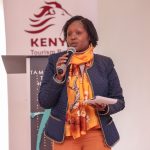Despite its minimal contribution to global emissions, Africa bears the brunt of climate change’s devastating impacts. The continent, responsible for only 2.8pc of global emissions from 1850 to 2021, faces the toughest challenges from climate change.
The continent witnesses more frequent and severe disasters like floods, earthquakes, and droughts. In 2021, seven of the ten most vulnerable countries to climate change were in Africa.
At COP27, a significant milestone was achieved with the establishment of the Loss and Damage Fund (LDF), aimed at addressing challenges in vulnerable developing countries, particularly in Africa. Governments formally established the Fund in November 2023 on the first day of COP28.
The $792 million pledged during COP-28 to set the LDF in motion was welcomed by developing countries, especially those in Africa.
Africa requires between $290 billion and $440 billion between 2020 and 2030 to finance loss and damage needs, highlighting the significant gap between pledges and the current realities.
The purpose of the LDF is to assist developing countries’ vulnerabilities to the address effects of climate change in responding to economic and noneconomic loss and damage associated with extreme weather and slow-onset events.
The Nairobi Declaration of September 2023 emphasized the operationalisation of the LDF as agreed at COP27. The Declaration resolved for a measurable Global Goal on Adaptation (GGA) with indicators and targets to assess progress against negative impacts of climate change.
The eligibility criteria for the LDF is to prioritise all developing countries, especially those facing vulnerability to climate change. It emphasises on a country-led approach to ensure that accessing the fund is integrated within national frameworks and respects the unique situations and contexts of different countries grappling with climate-induced loss and damages.
Developing countries within the Transitional Committee have advocated for universal eligibility for the LDF, emphasising on a fair access, determined by climate events, impacts, and necessities.
The LDF’s accessibility is critical for Africa. The eligibility criteria are designed to be inclusive, prioritising vulnerable developing countries. The proposed allocation system focuses on specific challenges faced by communities, catering to both immediate and long-term needs. This country-led approach ensures that accessing the fund aligns with national frameworks and addresses unique situations.
The decision-making process prioritizes data from the Intergovernmental Panel on Climate Change (IPCC), while acknowledging the limitations in data collection for some regions. Additionally, a minimum allocation floor for Least Developed Countries (LDCs) and Small Island Developing States (SIDS) is being considered. These elements, if implemented effectively, positions Africa to benefit significantly from the LDF.
African countries, with their diverse climate disasters such as droughts, floods, and rising sea levels, particularly in the Sahel, Horn of Africa, and equatorial regions, are potential candidates for LDF support. However, success depends on addressing capacity issues within African countries and ensuring their active role in LDF decision-making.
Implementing the LDF in vulnerable developing countries faces challenges such as limited resources versus vast needs, transparent eligibility criteria, direct fund access by local communities, and integration into national climate strategies. A robust mechanism for monitoring fund utilisation is crucial for transparency and accountability.
Despite the progress at COP28, significant gaps remain. Wealthy nations have yet to shoulder their fair share of responsibility. The initial pledges to the LDF fall far short of what’s needed to address the widespread human rights violations caused by years of climate inaction.
Discussions are ongoing to establish new, measurable climate finance goals by 2024, aiming for an annual target of $100 billion. While some developed nations have made initial pledges, the contribution from the United States remains disappointingly low compared to the EU and even some developing nations.
These discrepancies raise crucial questions from an African perspective: What is the official definition of loss and damage? How will the LDF be sustained financially? Which criteria will guide the allocation of funds?
These challenges notwithstanding, Africa has an opportunity. The LDF aims to address the devastating impacts of extreme weather events on the continent. However, work remains on establishing the fund’s governance structure, with an evaluation scheduled for 2027.
The establishment of the LDF is a significant step towards climate justice for Africa. Yet, the current pledges fall short of the estimated needs. Moving forward, increased contributions from developed nations are crucial to ensure sustainable and predictable financing. Africa, on its part, must advocate for clear definitions and criteria for loss and damage funding, ensuring the needs of its most vulnerable communities are addressed.
Furthermore, active engagement in setting and meeting new climate finance goals by COP29 is essential. Aiming for the $100 billion annual target is necessary to support effective national climate plans by 2025. These collective efforts hold the key to a fair transition and mitigating the devastating impacts of climate change on the continent.
DISCLAIMER: The views expressed on this article do not reflect the position of Kenya Broadcasting Corporation.
Written by Ifeoma Malo who is the Founder and CEO, Clean Technology Hub based in Nigeria.





